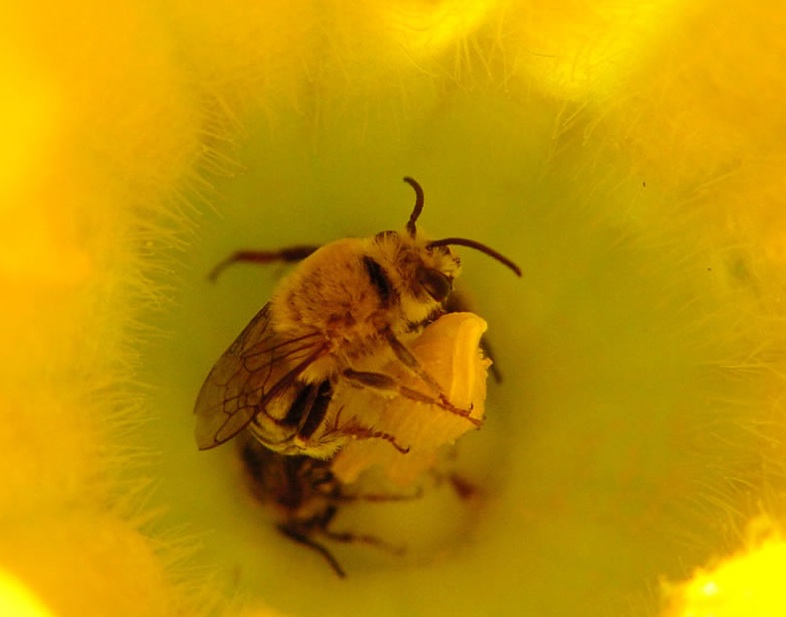
Features
Fruit
Production
Squash and gourd bees are superb pollinators
January 2, 2009 By USDA Agricultural Research Service
 December 31, 2008, Logan, UT – Acorn squash and other winter squashes
December 31, 2008, Logan, UT – Acorn squash and other winter squashes
at the local supermarket likely got their start months ago, when their
colourful blossoms were pollinated by hardworking bees.
December 31, 2008, Logan, UT – Acorn squash and other winter squashes at the local supermarket likely got their start months ago, when their colourful blossoms were pollinated by hardworking bees.
 An ongoing, science-based census – called Squash Bees of the Americas – is providing new information about the abundance of these bees and their excellence as squash and gourd pollinators.
An ongoing, science-based census – called Squash Bees of the Americas – is providing new information about the abundance of these bees and their excellence as squash and gourd pollinators.
Agricultural Research Service (ARS) entomologists Blair Sampson, James Cane and Frank Eischen are among the researchers and other specialists who document their observations for this international survey of 20 or so wild, indigenous bee species.
Cane, based at the agency’s Pollinating Insects Biology, Management and Systematics Research Unit in Logan, Utah, originated the survey. Eischen, at the ARS Honey Bee Research Unit in Weslaco, Texas, has contributed three years’ worth of data about squash pollinators of the Rio Grande Valley. Sampson, at the ARS Southern Horticultural Laboratory in Poplarville, Miss., has scrutinized bees pollinating pumpkin, zucchini, and crookneck and straightneck squash in fields near his laboratory.
According to Sampson, the pollinators that he studied – primarily Peponapis pruinosa and Xenoglossa strenua – appear to have all five traits of the world’s most proficient pollinators: They're fast, efficient, competitive, abundant, and consistent in their choice of crop.
These and other bee investigations at the three labs provide new insights into how growers, commercial and hobbyist beekeepers, and backyard gardeners can enhance populations of wild bees that pollinate crop plants. These bees augment the work of America’s top pollinator, the European honey bee, Apis mellifera.
Today’s honey bees not only have to deal with the still-puzzling colony collapse disorder, but also face on-going hassles from the usual sources – mites, beetles, disease organisms and Africanized honey bees.
Print this page